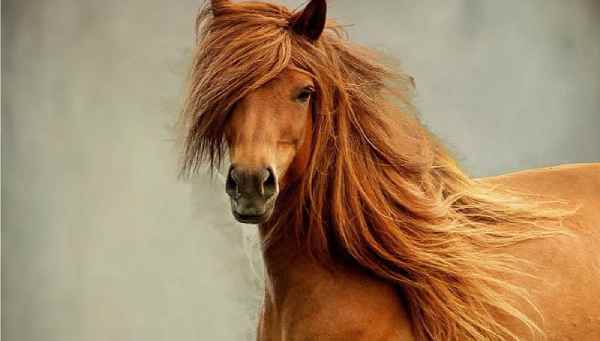Italy, renowned for its rich cultural heritage and breathtaking landscapes, is also home to a captivating array of wildlife. From the Alpine peaks in the north to the Mediterranean coastlines in the south, the country boasts a diverse range of habitats, each harboring unique animal species. Italy’s wildlife showcases an intertwining of Mediterranean, Alpine, and continental influences, resulting in a vibrant tapestry of biodiversity.
In this article, we embark on a fascinating journey to explore the wild side of Italy, unveiling the creatures that roam its forests, soar over its skies, and swim in its azure waters. Join us as we delve into the wonders of Italy’s fauna, understanding their ecological significance and the efforts made to preserve these incredible animals in Italy and their habitats.
Table of Contents
Overview Of Animals In Italy
Italian Wolf:

The Italian wolf, native to the Italian peninsula, is an iconic and endangered species. A subspecies of the gray wolf, it once roamed Italy’s diverse landscapes. Known for their intelligence and social structure, Italian wolves primarily hunt deer, wild boar, and smaller mammals. Human-wolf conflicts and habitat loss have significantly threatened their population. Conservation efforts strive to protect this majestic predator and restore its ecological role in Italy’s ecosystems.
European Brown Bear:
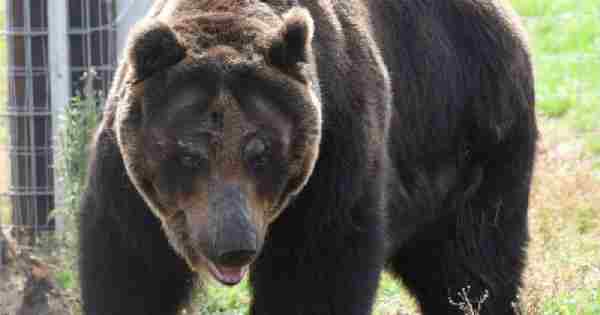
The European brown bear, symbolizing Italy’s wilderness, is a formidable yet elusive inhabitant. Populating the Alps and the Apennines, these large omnivores feed on berries, nuts, and occasionally small mammals. Once endangered due to hunting and habitat fragmentation, conservation initiatives have successfully revived their numbers. Coexistence strategies aim to mitigate conflicts and ensure the survival of this emblematic species, enriching Italy’s biodiversity.
Alpine Ibex:

The alpine ibex, a magnificent mountain-dwelling ungulate, graces Italy’s high-altitude regions. With its distinctive curved horns and robust build, it’s an adept climber, navigating steep cliffs with ease. Their diet comprises grasses, herbs, and shrubs. Historically threatened by hunting and habitat degradation, conservation measures have led to a remarkable recovery of their populations, showcasing the positive impact of conservation efforts on Italy’s alpine fauna.
Red Fox:
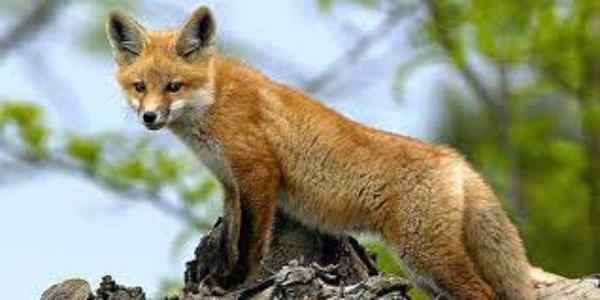
The red fox, an adaptable and widespread carnivore, is a common sight in Italy. With its reddish fur and bushy tail, it’s a versatile predator, feeding on small mammals, birds, and insects. Found across a variety of habitats, from forests to urban areas, the red fox’s ability to thrive in diverse environments is a testament to its resilience. Despite human-wildlife conflicts, the red fox remains an integral part of Italy’s ecosystem.
Roe Deer:
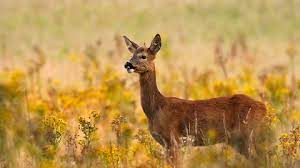
The roe deer, a graceful and widespread species, is a beloved inhabitant of Italian forests and grasslands. Recognized by their small size and distinctive antlers, roe deer primarily feed on vegetation and play a role in seed dispersal. They’re essential components of Italy’s wildlife heritage and are a focus of conservation efforts to sustain their populations and preserve their habitats.
Wild Boar:

The wild boar, an iconic and robust mammal, roams Italy’s woodlands, grasslands, and marshes. Recognizable by their distinctive tusks and coarse fur, they are opportunistic omnivores, foraging for roots, tubers, small mammals, and insects. Wild boars are a vital part of Italy’s ecological balance and are also a popular game species. Their adaptability and resilience in the face of changing landscapes highlight their importance in Italy’s diverse array of wildlife.
Chamois:

The chamois, an agile and sure-footed mountain-dweller, graces the high peaks of the Italian Alps. Known for their incredible climbing abilities and distinctive curved horns, chamois primarily feed on alpine vegetation. They are a vital link in the mountain ecosystem, shaping plant growth through their browsing habits. Conservation initiatives and protected areas have played a significant role in ensuring the survival of these magnificent creatures in the Italian Alps.
European Otter:
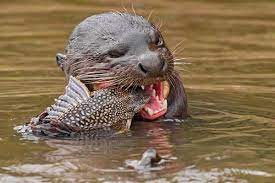
The European otter, a charismatic semi-aquatic mammal, thrives in Italy’s rivers, lakes, and coastal areas. Recognizable by their sleek bodies and playful behavior, otters are skilled hunters, primarily preying on fish and aquatic invertebrates. Pollution and habitat loss have historically threatened their populations, but conservation efforts have led to their gradual recovery. Otters are an indicator of water quality and play a crucial role in maintaining the ecological health of Italy’s aquatic habitats.
Pine Marten:
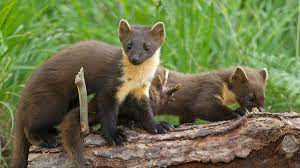
The pine marten, a small and elusive carnivore, is a denizen of Italy’s forests. Known for their glossy fur and bushy tails, they are primarily nocturnal hunters, preying on small mammals, birds, and insects. The pine marten’s presence signifies a healthy forest ecosystem, and their conservation is essential to maintaining the balance of Italy’s woodland habitats.
Wildcat:

The wildcat, a mysterious and solitary feline, roams Italy’s woodlands and rural areas. Resembling domestic cats but with distinctive markings, wildcats are elusive and expert hunters, primarily feeding on small mammals and birds. Hybridization with domestic cats and habitat fragmentation pose significant threats to their survival. Conservation efforts aim to preserve the genetic purity of this iconic species, securing its place in Italy’s rich tapestry of wildlife.
Golden Eagle:
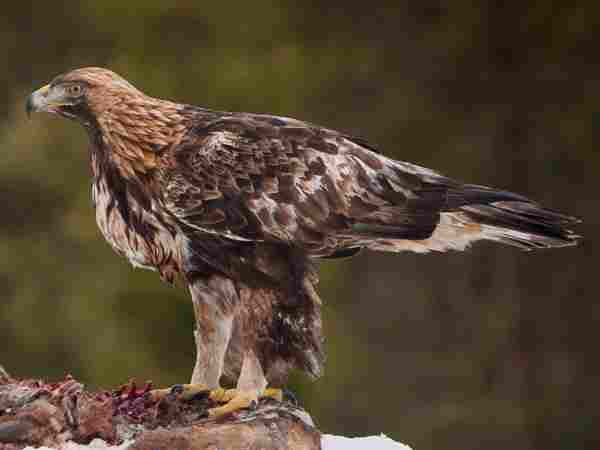
The golden eagle, a majestic and powerful bird of prey, graces Italy’s skies, particularly the mountainous regions. Recognizable by their impressive size and golden-brown plumage, they are skilled hunters, preying on a variety of mammals, birds, and even reptiles. Golden eagles are an iconic symbol of freedom and strength, deeply ingrained in Italian culture. Conservation efforts are underway to protect their habitats and ensure their continued presence, contributing to the awe-inspiring beauty of Italy’s natural landscapes.
Peregrine Falcon:
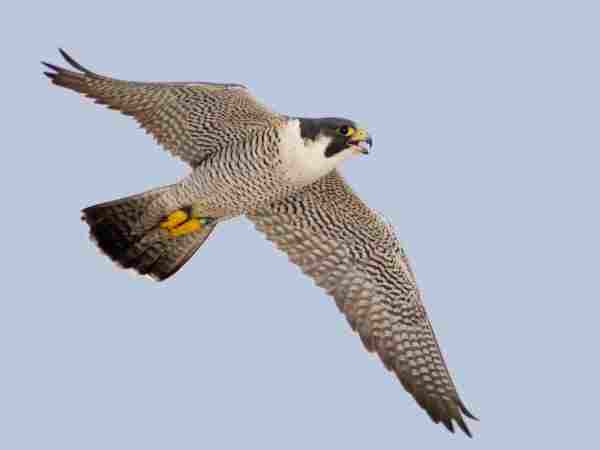
The peregrine falcon, renowned for its remarkable speed and aerial prowess, is a common raptor species in Italy. With their distinct markings and pointed wings, they are formidable hunters, primarily preying on birds. Peregrine falcons have made a remarkable recovery after facing threats from pesticides, showcasing successful conservation initiatives. They are a testament to nature’s resilience and are a source of fascination for birdwatchers and conservationists alike.
Common Buzzard:
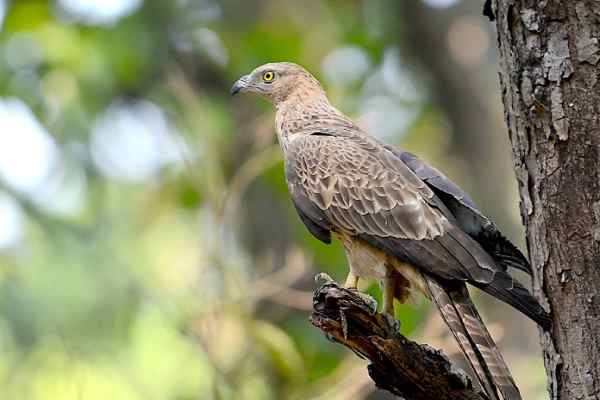
The common buzzard, a widespread bird of prey, graces Italy’s skies and open landscapes. Recognizable by their broad wings and distinctive call, they are versatile hunters, feeding on small mammals, birds, and carrion. Common buzzards are integral to Italy’s ecosystem, contributing to the regulation of prey populations. Their adaptability and prevalence make them a common sighting for bird enthusiasts exploring the Italian countryside.
Barn Owl:
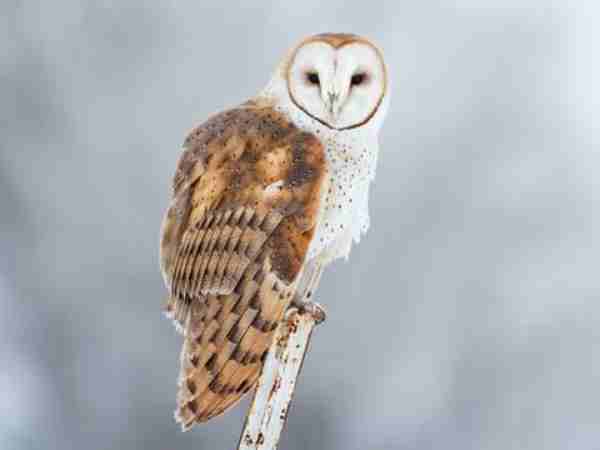
The barn owl, with its ghostly appearance and haunting call, is a nocturnal bird of prey found throughout Italy. Known for their heart-shaped facial disc and silent flight, barn owls are voracious hunters, primarily targeting rodents. Farmers appreciate their role in natural pest control, making them a welcome presence in agricultural landscapes. Conservation efforts promote the installation of nesting boxes to support their populations and sustain their contribution to Italy’s biodiversity.
European Robin:

The European robin, a small and charming songbird, frequents Italy’s woodlands, gardens, and parks. Recognizable by their orange-red breast and melodious song, robins are insectivorous and also feed on berries. They are a beloved and symbolic bird, often associated with the beauty of the Italian countryside. Their year-round presence and sweet serenades add a delightful melody to Italy’s diverse birdlife.
Hoopoe:

The hoopoe, with its distinctive crown of feathers and long, slender bill, is an enchanting bird often found in Italy’s woodlands, meadows, and gardens. Recognizable by their striking appearance and melodious calls, hoopoes are insectivorous and use their specialized bills to probe for insects hidden in the ground.
They are celebrated for their unique appearance and are considered symbols of good luck in some cultures. The presence of hoopoes in Italy’s landscapes adds a touch of charm to its biodiversity, highlighting the importance of preserving habitats where these elegant birds thrive.
Great Spotted Woodpecker:
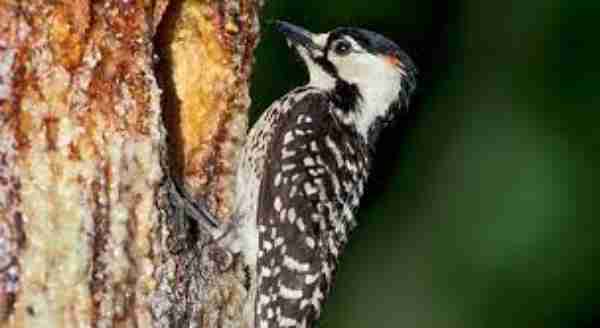
The great spotted woodpecker, a masterful drummer of the forest, can be found in woodlands and parks across Italy. With their striking black and white plumage and red patches on their heads, they are agile climbers and expert insect hunters, often tapping on tree trunks in search of food. Great spotted woodpeckers play a vital role in controlling insect populations and are a delight for birdwatchers and nature enthusiasts exploring Italy’s wooded areas.
Common Kestrel:

The common kestrel, a small but mighty raptor, is a familiar sight in Italy’s open countryside and urban landscapes. Recognizable by their hovering flight and striking coloration, they are agile hunters, preying on rodents, insects, and small birds. Common kestrels are appreciated for their role in pest control, making them valuable allies for farmers. Their adaptability to diverse habitats and keen hunting skills highlight their importance in Italy’s avian biodiversity.
Eurasian Jay:

The Eurasian jay, with its vibrant plumage and raucous calls, inhabits woodlands and forests throughout Italy. Recognizable by their striking blue and white markings, they are omnivorous, feeding on a variety of food items, including acorns, insects, and small vertebrates. Eurasian jays play a role in seed dispersal and contribute to forest regeneration. Their vocal presence and striking appearance add to the allure of Italy’s birdlife, underscoring the beauty and ecological significance of its natural habitats.
Mallard:

The mallard, a familiar and adaptable waterfowl species, graces Italy’s ponds, rivers, and wetlands. Recognizable by their iridescent green heads and quacking calls, they are omnivores, feeding on aquatic plants, insects, and small fish. Mallards are a symbol of wetland ecosystems and are often encountered in urban park settings, where they delight visitors with their presence. Their prevalence in Italy’s aquatic environments highlights their resilience and importance as a species of cultural and ecological significance.
European Green Lizard:

The European green lizard is a striking reptile that inhabits various parts of Italy. Known for its vibrant green coloration and distinct body scales, these lizards are commonly found in sunny, open habitats such as meadows, rocky outcrops, and shrublands. They are primarily insectivorous, feasting on a diet of insects, spiders, and other small invertebrates. European green lizards are important in maintaining local insect populations and are a sight to behold with their vibrant appearance, especially during the breeding season when males develop bright blue throats. Their presence adds to Italy’s herpetological diversity.
Common Wall Lizard:

The common wall lizard, also known as the European wall lizard, is a widely distributed reptile in Italy. These lizards are highly adaptable and can be found in various environments, including walls, rocks, and gardens. They exhibit color variations, often displaying shades of green or brown with intricate patterns. Common wall lizards are insectivorous, preying on small insects and spiders. Their ability to thrive in urban settings makes them a common sight in cities and towns, where they bask in the sun on walls and rocky surfaces. They are emblematic of Italy’s reptilian fauna.
European Pond Turtle:

The European pond turtle, or European pond terrapin, is a freshwater turtle species native to Italy. These turtles are well-suited to aquatic habitats, including ponds, rivers, and marshes. Recognizable by their distinctive dark green or brown shells with yellow markings, they are omnivorous, feeding on aquatic plants, invertebrates, and small fish. European pond turtles play a vital role in wetland ecosystems by helping to maintain the balance of aquatic life. Unfortunately, habitat loss and human activities pose threats to their populations, underscoring the importance of their conservation in Italy’s aquatic habitats.
Italian Agile Frog:

The Italian agile frog, a small and agile amphibian, inhabits Italy’s wetlands, ponds, and marshes. With its smooth skin and green or brown coloration, these frogs are known for their rapid movements and distinctive calls during the breeding season. Italian agile frogs primarily feed on insects and other small invertebrates, contributing to pest control in their habitats. They are valuable bioindicators, reflecting the health of wetland ecosystems and the water quality within them. Conservation efforts are essential to safeguard their populations and the fragile wetland habitats they inhabit.
Italian Crested Newt:

The Italian crested newt is a captivating amphibian species native to Italy. These newts are known for their intricate patterns and crests along their backs, especially in males during the breeding season. They inhabit freshwater bodies, including ponds, lakes, and slow-moving streams. Italian crested newts primarily feed on aquatic invertebrates. They are an essential part of Italy’s amphibian diversity, but like other amphibians, they face threats from habitat destruction and pollution. Conservation efforts aim to protect their unique habitats and ensure their continued presence in Italy’s aquatic ecosystems.
European Honey Bee:
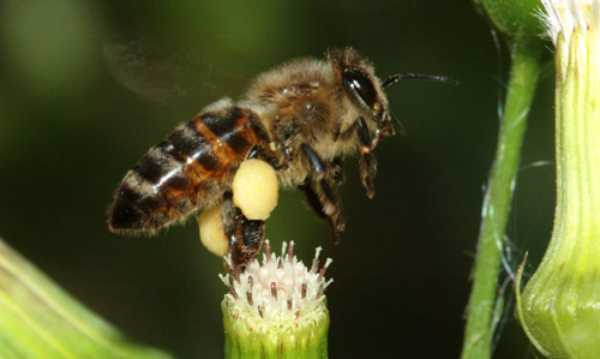
The European honey bee, a highly organized and vital insect, thrives in Italy’s varied landscapes, from rural countryside to urban gardens. Recognized by their distinctive black and yellow stripes, honey bees are essential pollinators crucial for agricultural productivity and ecosystem stability. They play a significant role in pollinating flowers and crops, ensuring the production of fruits, vegetables, and seeds. Beekeeping has a long history in Italy, and honey bees are not only important for honey production but also for biodiversity and sustainable agriculture.
Swallowtail Butterfly:

The swallowtail butterfly, a graceful and colorful insect, graces Italy’s gardens and meadows. Known for their striking wings adorned with vibrant patterns and tails resembling swallowtails, these butterflies are a delight for nature enthusiasts. Swallowtails primarily feed on nectar from a variety of flowers and contribute to pollination. They undergo a fascinating metamorphosis, transitioning from egg to caterpillar to pupa and finally to the adult butterfly. Their presence enhances the beauty of Italy’s flora and emphasizes the interconnectedness of insects with the country’s ecosystems.
European Mantis:
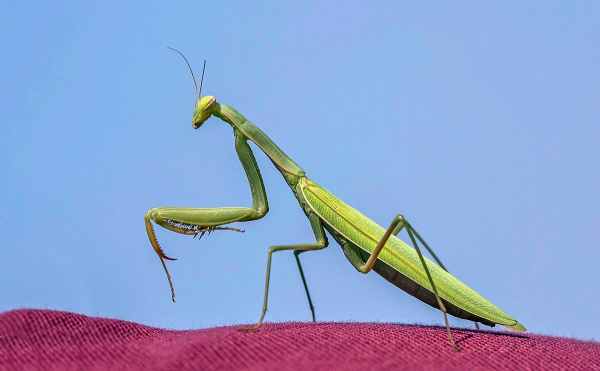
The European mantis, a master of camouflage and ambush, can be found in Italy’s grasslands, meadows, and gardens. Recognizable by their elongated bodies and spiky forelegs, mantises are carnivorous, preying on a range of insects. They are highly efficient hunters, using their stealth and agility to capture prey. European mantises play a role in natural pest control, keeping insect populations in check. Their fascinating behavior and appearance make them a subject of interest for insect enthusiasts and observers of Italy’s diverse insect fauna.
Italian Painted Lady:

The Italian-painted lady butterfly, a charming and delicate insect, graces Italy’s gardens and open fields. Known for their vivid orange and black markings, these butterflies are migratory and can be found across various habitats. They primarily feed on nectar from a variety of flowering plants. The Italian-painted lady undergoes metamorphosis, transitioning from egg to caterpillar to chrysalis and emerging as a beautiful adult butterfly. Their fluttering presence enriches Italy’s natural scenery, showcasing the elegance and wonder of the insect world.
Tuscan Hairstreak Butterfly:

The Tuscan hairstreak butterfly, a small and enchanting species, is native to Italy and can be found in its woodlands and grasslands. Recognizable by their intricate patterns and tails on their wings, these butterflies are an attractive sight for butterfly enthusiasts. They primarily feed on nectar from various flowering plants. The Tuscan hairstreak butterfly’s presence is a testament to Italy’s diverse butterfly fauna and adds to the biodiversity and ecological importance of its natural habitats.
Brown Trout:

The brown trout, a prized freshwater fish, is a common inhabitant of Italy’s rivers, streams, and lakes. Recognizable by their olive-brown coloration with black and red spots, brown trout are highly sought after by anglers. They are opportunistic feeders, preying on insects, crustaceans, and small fish. Brown trout are a vital part of Italy’s fisheries and contribute to the country’s recreational fishing opportunities. Sustainable fishing practices and habitat conservation are essential to ensure the preservation of this iconic species in Italy’s water bodies.
European Eel:

The European eel, a fascinating and enigmatic fish, is found in Italy’s rivers, lakes, and coastal waters. Recognizable by their long, snake-like bodies, these eels have a complex life cycle that involves migration from freshwater to the ocean for spawning. Eels are an important commercial and cultural fishery in Italy, and their meat is a delicacy in many Italian dishes. Conservation efforts focus on understanding and mitigating the challenges eels face, such as habitat loss and barriers to migration, to sustain their populations.
Italian Barbel:

The Italian barbel, a common and prized fish, inhabits Italy’s rivers and streams. Recognizable by their streamlined bodies and distinctive barbels near their mouths, they are popular targets for anglers. Italian barbels primarily feed on insects, crustaceans, and small fish. They play a vital role in the aquatic food chain and contribute to the ecological balance of Italy’s freshwater ecosystems. Sustainable fishing practices and habitat restoration are crucial for the conservation of Italian barbel populations.
European Perch:

The European perch, a widely distributed freshwater fish, is prevalent in Italy’s lakes, rivers, and ponds. Recognizable by their greenish coloration with distinctive dark stripes, perch are popular among anglers and are valued for their tasty meat. They primarily feed on smaller fish, insects, and crustaceans. European perch are an integral part of Italy’s recreational and commercial fisheries, and sustainable management practices are vital to ensure their continued abundance and ecological importance in Italian waters.
Marble Trout:

The marble trout, an indigenous and distinctive freshwater fish, is native to Italy’s clear, cold mountain streams and rivers. Recognizable by their marbled pattern and vibrant colors, marble trout are highly prized by anglers for their challenging sport and beautiful appearance. Conservation efforts are focused on preserving their unique genetic traits and habitats, given the threat of hybridization and habitat degradation. Marble trout are emblematic of Italy’s pristine freshwater environments and the need for sustainable fishing practices.
Sea Bass:

The European sea bass, a popular and delectable marine fish, inhabits Italy’s coastal waters of the Mediterranean and Adriatic Seas. Recognizable by their silver color and characteristic dark stripes, sea bass are prized for their delicate flavor and tender flesh. They primarily feed on smaller fish, crustaceans, and mollusks. European sea bass are a significant commercial and recreational fishery in Italy, contributing to the country’s culinary heritage. Sustainable fishing practices and responsible aquaculture are essential for ensuring the continued availability and sustainability of this prized seafood.
Sardines:

Sardines, small and nutrient-rich fish, are abundant in Italy’s coastal waters. Recognizable by their silver bodies and distinctive dorsal fins, sardines often form large schools near the water’s surface. They primarily feed on plankton and are a vital part of the marine food web. Sardines are not only an important fishery for human consumption but also serve as a crucial component in the diet of larger predatory fish. Sustainable fishing practices and responsible management of sardine populations are crucial to maintain their ecological role and support Italy’s fishing industry.
Common Dolphin:
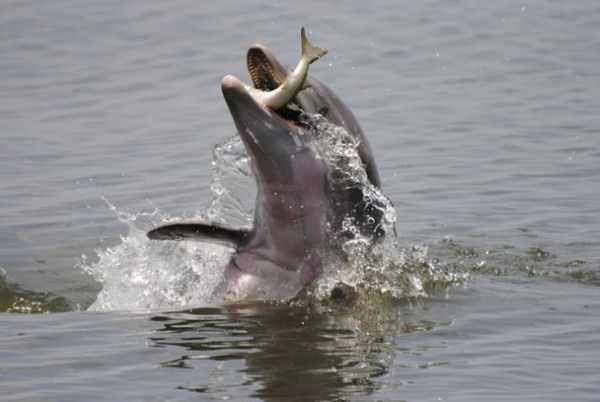
The common dolphin, a charismatic and highly intelligent marine mammal, inhabits the waters surrounding Italy. Recognizable by their sleek bodies, distinctive hourglass patterns on their sides, and playful behavior, common dolphins are a delight for marine enthusiasts. They primarily feed on fish and cephalopods and are known for their acrobatic displays. Common dolphins are an integral part of Italy’s marine biodiversity and are often encountered during boat tours, adding to the enchantment of the Mediterranean and Adriatic Seas.
Loggerhead Sea Turtle:

The loggerhead sea turtle, an iconic and endangered marine reptile, frequents Italy’s coastal waters and nesting sites. Recognizable by their large heads and powerful jaws, loggerhead turtles primarily feed on jellyfish, crustaceans, and mollusks. They are known for their long migrations and play a crucial role in maintaining the health of marine ecosystems. Conservation efforts are vital to protect loggerhead sea turtles from threats such as habitat degradation, bycatch, and climate change, ensuring their survival and the preservation of Italy’s marine biodiversity.
Seals (e.g., Mediterranean Monk Seal):

The Mediterranean monk seal, a critically endangered marine mammal, was historically found along Italy’s coastlines. Recognizable by their sleek bodies and distinctive facial features, these seals are now extremely rare in the Mediterranean. Habitat loss, hunting, and human disturbances have severely impacted their populations. Conservation initiatives and protected areas aim to preserve the remaining monk seals and their habitats, highlighting the importance of proactive conservation measures to safeguard Italy’s marine mammal diversity.
European Garden Spider:

The European garden spider, a common and intricate arachnid, weaves its intricate orb-shaped webs in gardens and meadows across Italy. Recognizable by their intricate web patterns and characteristic yellow and black markings, these spiders play a crucial role in controlling insect populations. They primarily feed on flying insects like flies and mosquitoes, making them valuable natural pest controllers. The presence of European garden spiders in Italy’s ecosystems highlights the delicate balance and complexity of the arthropod community, contributing to the overall health of the environment.
Roman Snail:

The Roman snail, a large and distinctive mollusk, is a common sight in Italy’s forests, gardens, and grasslands. Recognizable by their spiraled shells and slow movement, these snails play a vital role in the ecosystem by breaking down organic matter and helping in nutrient cycling. Roman snails are also consumed in many traditional Italian dishes, showcasing their cultural significance. The coexistence of Roman snails and their interactions with the environment illustrate the intricate relationships within Italy’s diverse fauna.
European Crayfish:

The European crayfish, a freshwater crustacean, inhabits Italy’s rivers, lakes, and streams. Recognizable by their lobster-like appearance, these crayfish are an important part of aquatic ecosystems. They primarily feed on aquatic plants, insects, and small animals. European crayfish serve as indicators of water quality and habitat health. Their populations face threats from habitat degradation and invasive species, emphasizing the need for conservation measures to protect Italy’s native crayfish and maintain the ecological balance of its freshwater habitats.
Italian Horse:
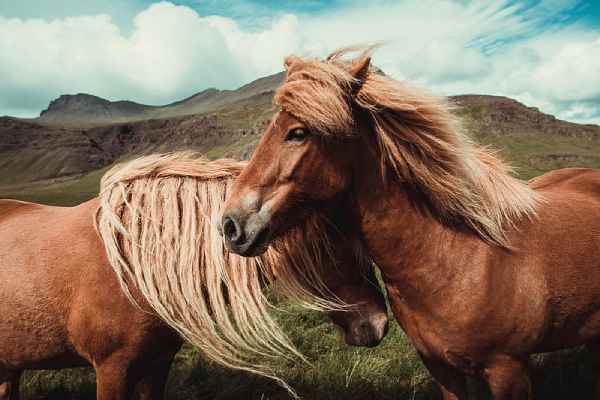
The Italian horse, encompassing various breeds like the Sardinian horse and Maremmano, holds a historical and cultural significance in Italy. Known for their strength, endurance, and versatility, Italian horses have been essential partners in agriculture, transportation, and sports. Each breed reflects the unique characteristics of the region it hails from. Today, they are celebrated in equestrian events, highlighting Italy’s deep-rooted equestrian tradition and fostering a strong connection between humans and these magnificent animals.
Chianina Cattle:

The Chianina cattle, a distinct and revered breed, is native to Italy, particularly the Chiana Valley in Tuscany. Recognizable by their towering size and white coat, Chianina cattle are renowned for their exceptional meat quality and lean muscle mass. They have a vital role in Italy’s cattle industry, contributing to its rich culinary heritage. Chianina beef is a prized ingredient in traditional Italian dishes, underlining the cultural and gastronomic importance of this remarkable breed.
Sicilian Donkey:
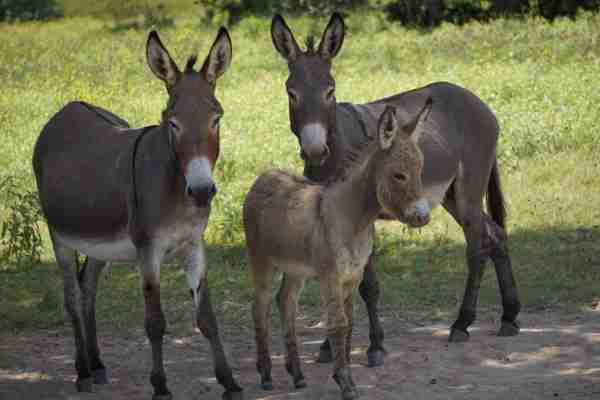
The Sicilian donkey, a small and hardworking equine, is a familiar sight in Sicily and other parts of Italy. Recognizable by their gray coat and distinctive cross markings on their backs, Sicilian donkeys were historically crucial for agricultural tasks and transportation. Over the years, their numbers have declined, but efforts are underway to preserve and promote the breed. Sicilian donkeys are a reminder of Italy’s agricultural roots and the enduring partnership between humans and animals.
Italian Chicken Breeds:
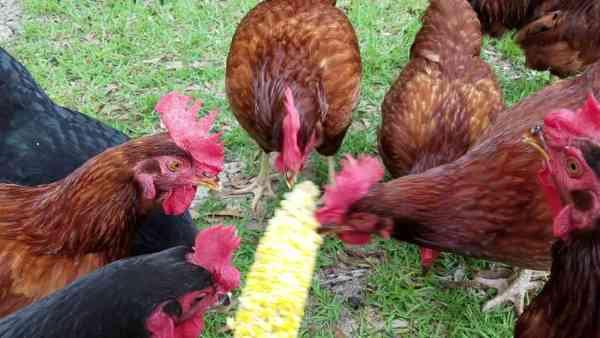
Italy boasts several unique chicken breeds, each with its distinct characteristics and contributions. Breeds like the Livorno (Leghorn), Bresse, and Padovana are known for their egg-laying abilities and adaptability to different environments. Italian chicken breeds play a vital role in the country’s poultry industry, providing eggs and meat to its culinary landscape. Additionally, efforts to preserve native breeds, like the Sicilian Buttercup, aim to conserve genetic diversity and maintain Italy’s heritage in poultry farming.
Conservation Efforts and Challenges For Animals in Italy:
Italy, with its extraordinary wealth of biodiversity, has made commendable efforts in recent years to preserve its unique flora and fauna. Various conservation initiatives and protected areas have been established across the country to safeguard endangered species and their habitats. Organizations collaborate with local communities, government bodies, and international entities to develop and implement conservation strategies.
The main challenges in conservation efforts often revolve around habitat loss due to urbanization, agricultural expansion, and climate change. Additionally, the illegal wildlife trade and invasive species pose significant threats to Italy’s wildlife. Mitigating these challenges requires a multi-faceted approach, including habitat restoration, education and awareness programs, sustainable land use planning, and effective legislation to combat illegal activities. By addressing these challenges collectively, Italy aims to ensure the preservation of its natural heritage for generations to come.
Animal-Friendly Tourism and Education For Animals in Italy:
As the appreciation for wildlife and conservation grows, Italy is increasingly focusing on promoting animal-friendly tourism and education. Sustainable tourism practices, such as responsible wildlife watching, guided eco-tours, and visits to conservation centers, are gaining traction. These practices prioritize minimizing disturbance to animals and their habitats while providing educational experiences to tourists.
Educational programs and initiatives in schools and communities play a crucial role in raising awareness about Italy’s diverse wildlife and the importance of conservation. By fostering a sense of responsibility and respect for nature, these efforts encourage a sustainable coexistence between humans and animals. Furthermore, supporting ethical wildlife tourism can contribute to conservation funding and community development, aligning economic interests with conservation goals.
Final Words:
Animals in Italy and captivating wildlife is an integral part of its natural heritage, deserving our attention, care, and protection. Conservation efforts, despite challenges, reflect the dedication of individuals, organizations, and communities in preserving the country’s rich biodiversity. Embracing animal-friendly tourism and emphasizing education can serve as catalysts for a more harmonious relationship between people and wildlife. Together, through a collective commitment to conservation and sustainable practices, we can ensure that Italy’s wildlife continues to thrive and enchant generations to come.
Reference:
- https://www.goway.com/travel-information/europe/italy/nature-and-wildlife
- https://www.godigit.com/international-travel-insurance/famous-places-and-things/what-is-italy-famous-for
- https://www.workingabroad.com/travel/italy-wildlife-and-biodiversity

Rahul M Suresh
Visiting the Zoo can be an exciting and educational experience for all involved. As a guide, I have the privilege of helping students and visitors alike to appreciate these animals in their natural habitat as well as introducing them to the various aspects of zoo life. I provide detailed information about the individual animals and their habitats, giving visitors an opportunity to understand each one more fully and appreciate them in a more intimate way.

